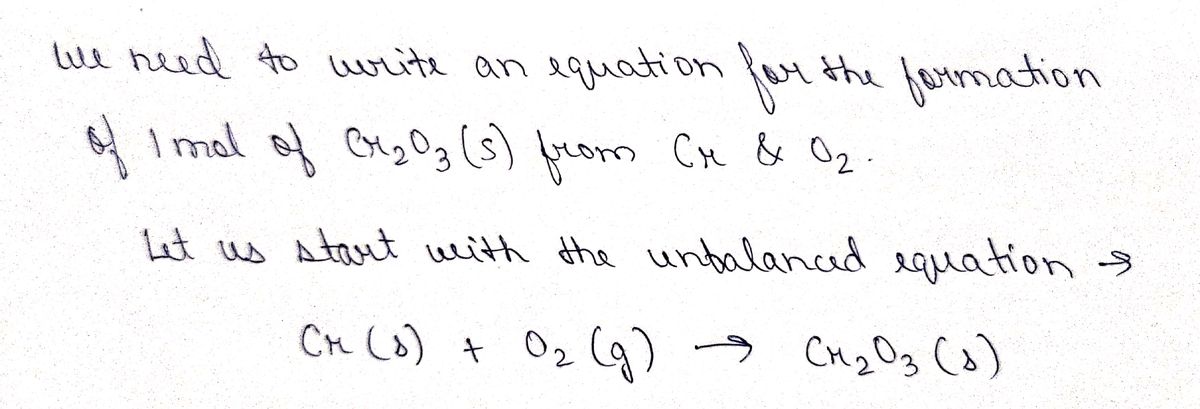a balanced chemical equation for formation of I mol of a. write the Cr₂O₂ (s) from Cr and O₂ in their standard states (Be sure to specify states such as (99) or (s). If a box is not needed, leave it blank. If no reaction occurs, leave all boxes blonds blank and Click on Submit). +
Thermochemistry
Thermochemistry can be considered as a branch of thermodynamics that deals with the connections between warmth, work, and various types of energy, formed because of different synthetic and actual cycles. Thermochemistry describes the energy changes that occur as a result of reactions or chemical changes in a substance.
Exergonic Reaction
The term exergonic is derived from the Greek word in which ‘ergon’ means work and exergonic means ‘work outside’. Exergonic reactions releases work energy. Exergonic reactions are different from exothermic reactions, the one that releases only heat energy during the course of the reaction. So, exothermic reaction is one type of exergonic reaction. Exergonic reaction releases work energy in different forms like heat, light or sound. For example, a glow stick releases light making that an exergonic reaction and not an exothermic reaction since no heat is released. Even endothermic reactions at very high temperature are exergonic.
![### Writing a Balanced Chemical Equation
**Objective:** Learn how to write a balanced chemical equation for the formation of 1 mole of Cr₂O₃(s) from its elements in their standard states.
**Instructions:**
1. Write out the balanced chemical equation for the formation of chromium(III) oxide, Cr₂O₃(s), using elemental chromium (Cr) and oxygen (O₂).
2. Make sure to include the physical states of each substance, such as solid (s) or gas (g).
3. If a placeholder or box is not needed, leave it blank.
4. If no reaction occurs, leave all boxes blank and click "Submit."
**Reaction Layout:**
\[ \text{[ ]} + \text{[ ]} \rightarrow \text{[ ]} \]
Use this guide to ensure that the chemical equation is properly balanced and includes all necessary states of matter for the reactants and products.](/v2/_next/image?url=https%3A%2F%2Fcontent.bartleby.com%2Fqna-images%2Fquestion%2Ff7ba9c54-af2b-48c5-8dd4-4f214c676725%2Fa639a147-f279-4e1d-9ad8-156bff739bc0%2Fyt2niv8_processed.jpeg&w=3840&q=75)

Step by step
Solved in 2 steps with 2 images









